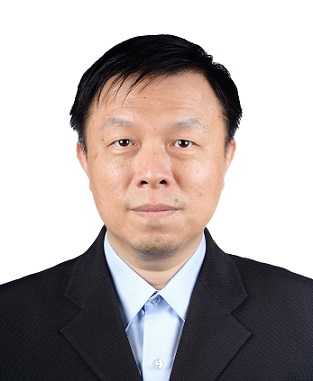Invited Talk 3 - Prof. Chien-Chung Lin, ITRI, Taiwan
Invited Talk 3 - Visible Light Communication System for Indoor Positioning and Secure Data Transmission Application, Prof. Chien-Chung Lin, ITRI, Taiwan
Title
Visible Light Communication System for Indoor Positioning and Secure Data Transmission Application
Abstract
Enabling systems are studied and developed for high rate PD communication (Li-Fi), low rate PD communication (Light-ID), and optical camera communication (OCC). In this talk, we will demonstrate three VLC systems developed by ITRI. The first demonstration is 110Mbit/s Li-Fi system which integrates a FPGA-based optical-OFDM transceiver with 16-QAM modulation scheme and a 6dB 50MHz modulator for low-bandwidth phosphor-converted (PC) LEDs. In this Li-Fi system, we also replace the PC-LEDs with PC-LDs to extend the bandwidth and the transmission rate of 1027Mbit/s has been achieved. The second system is a clinical-grade Light-ID server-based indoor positioning system with a machine-learning algorithm to achieve 30cm of accuracy and 95% of precision. This system has been conducted in a hospital for asset management to improve nurse shift efficiency The third system is a client-based indoor positioning system embedded the OCC demodulation scheme in mobile device. The smart phones or tablets could be integrated with shopping or autonomous carts to provide location-based-services (LBS) for personalized precision marketing, product navigation, commodity replenishment and picking in the retail stores.
Prof. Chien-Chung Lin, ITRI, Taiwan
Short Bio
Chien-Chung Lin received the B.S. degree in electrical engineering from the National Taiwan University in 1993, and the M.S. and Ph.D. degrees in electrical engineering from Stanford University, Stanford, CA, USA, in 1997 and 2002, respectively. His thesis work focused on design, modeling, and fabrication of micromachined-tunable optoelectronic devices. Since 2009, he has been with National Chiao Tung University (NCTU), Tainan, Taiwan, where he holds a position as a Professor. The major research efforts in his group are in design and fabrication of novel semiconductor optoelectronic devices, including LEDs, solar cells, and lasers. Since 2016, he has been jointly appointed by the Industrial Technology Research Institute (ITRI), where he participates and leads several key projects in the micro LEDs, 3DIC, and silicon photonics. Before joining NCTU, he worked for different start-ups in the United States. After graduating from Stanford in 2002, he joined E2O Communications Inc., Calabasas, CA, USA, as a Senior Optoelectronic Engineer. His main research interests were in long-wavelength vertical cavity surface emitting lasers. In 2004, he joined Santur Corporation, Fremont, CA, where he initially worked as a member of technical staff then became Manager of Laser Chip Engineering later. He had worked on various projects such as monolithic multi-wavelength DFB Laser arrays for data and telecommunications applications, yield and reliability analysis of DFB Laser arrays, etc. From 2015 to 2017, he was the recipient of the Young Investigator Research Grant by Ministry of Science and Technology of Taiwan. He has more than 230 journal and conference publications and is a Fellow of the Optical Society (formerly the Optical Society of America) and a senior member of the IEEE Electron Devices Society and Photonics Society.
